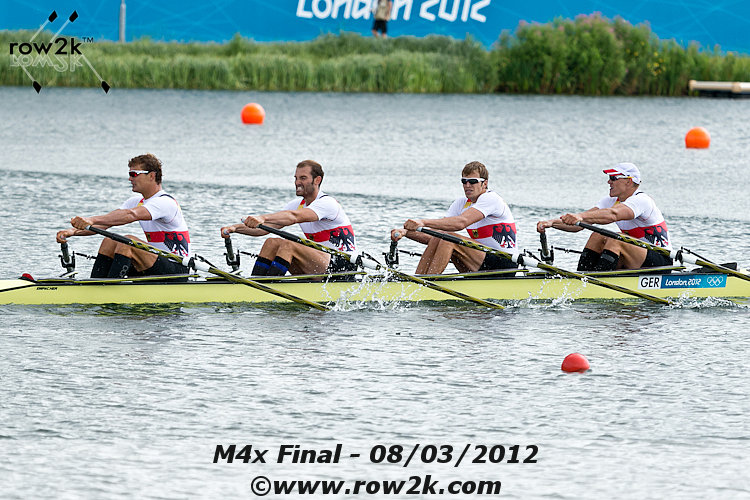Horizontal Movement, Relaxation, and Fluidity

For every group we coach, we begin with an explanation of three basic principles. We feel these are integral to efficient rowing and should be incorporated into every rowing stroke, whether sweeping, sculling or erging. These three are horizontal movement, relaxation and fluidity.
For the first principle, think about the boat moving across a horizontal body of water. Any up and down motion is wasted so work to apply your power as horizontally as possible. Mostly this involves your upper body; think head, shoulders, hands. The tendency is to go up during the drive which causes the oar to go deep.
One way to self coach is to become aware of the water line as it relates to the shaft of the oar. Is water creeping more than 1/4 of the way up the shaft? If so, you’re going too deep and need to adjust your hand heights, which often involves adjusting the height of your head and shoulders too. You want to become aware of the level of your head. Ideally it should stay on the same plane wherever you are in the stroke - catch, drive, finish, recovery, the head should stay the same. Wear a hat with a brim and sight off the brim, see where it lines up on the horizon. If that sight line changes, then you know your head height has changed.
The second principle is relaxation. The best athletes make it look easy. It doesn’t matter what sport - swimming, rowing, downhill skiing, etc - the best make you think you could easily do what they’re doing but if you try, you’ll discover it’s a lot more difficult than it looks. What they’ve learned is to relax, to use only the muscles that are necessary to do what needs to be done. Gritting your teeth won’t make the boat go faster, neither will death gripping the oar handle. Concentrate on which muscles you need to propel the boat forward and let everything else relax, obviously including the recovery. We call it lazy rowing but really it’s just efficient rowing.
Finally, fluidity. I added this third principle after watching video of the 2012 Olympics. I specifically remember the German Men’s 4x and thinking to myself, “Why aren’t they rowing harder?”. It was the final so of course they were rowing as hard as they could but they made a rating of 35 - 36 look like 27 - 28 and full power look like steady state. What makes this possible is their rhythm and flow in the boat.
We know that the boat is moving through water, a fluid. Their ability to move in unison with the boat as it flows through the water is what creates this beautiful effect. Rhythm and fluidity go hand in hand. However, we rarely if ever talk about ratio as that tends to make the stroke mechanical and artificial. If you can find the natural fluidity of the stroke, you’ll find it much easier to keep going at a higher intensity.
Charlotte Hollings and her husband John Dunn run Calm Waters Rowing, a sculling school in Lancaster, VA. While these articles will hopefully include something for everyone, they are mostly written with the single sculler in mind.
If you enjoy and rely on row2k, we need your help to be able to keep doing all this. Though row2k sometimes looks like a big, outside-funded operation, it mainly runs on enthusiasm and grit. Help us keep it coming, thank you! Learn more.
Comments | Log in to comment |
There are no Comments yet
| |
- Bont Rowing
- Calm Waters Rowing
- Concept 2
- Craftsbury Sculling
- The Crew Classic
- CrewLAB
- Croker
- Durham Boat Co.
- Empacher
- Faster Masters
- Filippi
- Fluidesign
- h2row.net
- HUDSON
- Live2Row Studios
- Nielsen-Kellerman
- Oak Ridge RA
- Peinert Boat Works
- Pocock Racing Shells
- Race1 USA
- RowKraft
- Rubini Jewelers
- Vespoli USA
- WinTech Racing
- Bont Rowing
- Calm Waters Rowing
- Concept 2
- Craftsbury Sculling
- The Crew Classic
- CrewLAB
- Croker
- Durham Boat Co.
- Empacher
- Faster Masters
- Filippi
- Fluidesign
- h2row.net
- HUDSON
- Live2Row Studios
- Nielsen-Kellerman
- Oak Ridge RA
- Peinert Boat Works
- Pocock Racing Shells
- Race1 USA
- RowKraft
- Rubini Jewelers
- Vespoli USA
- WinTech Racing

















